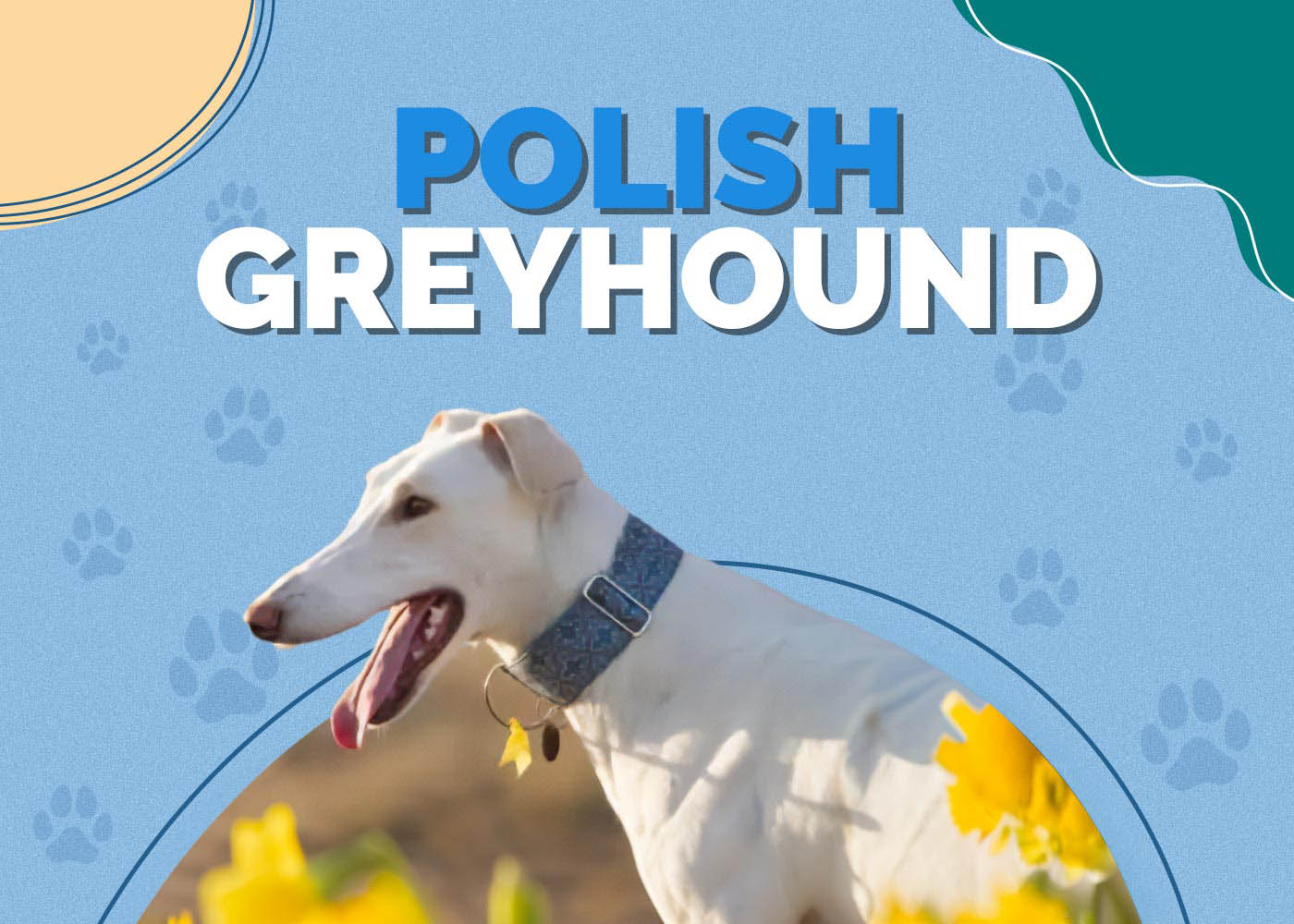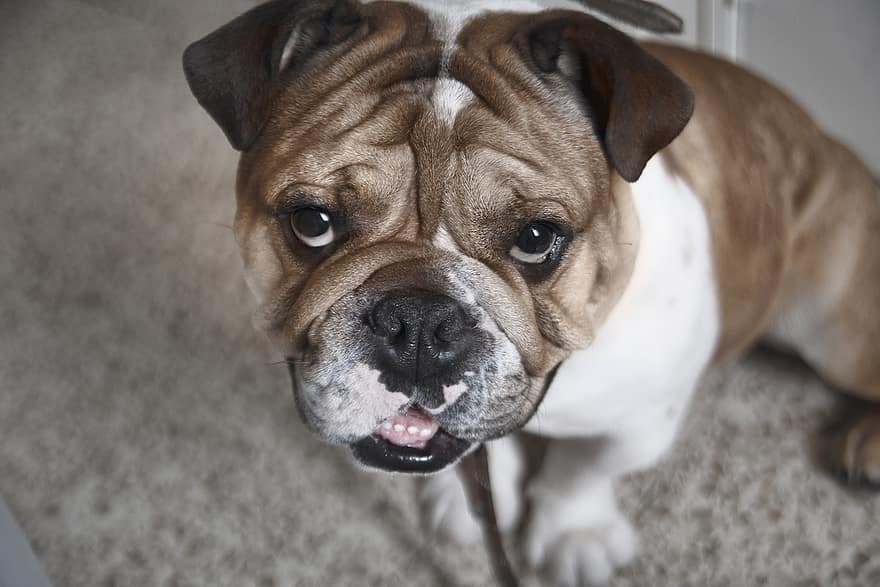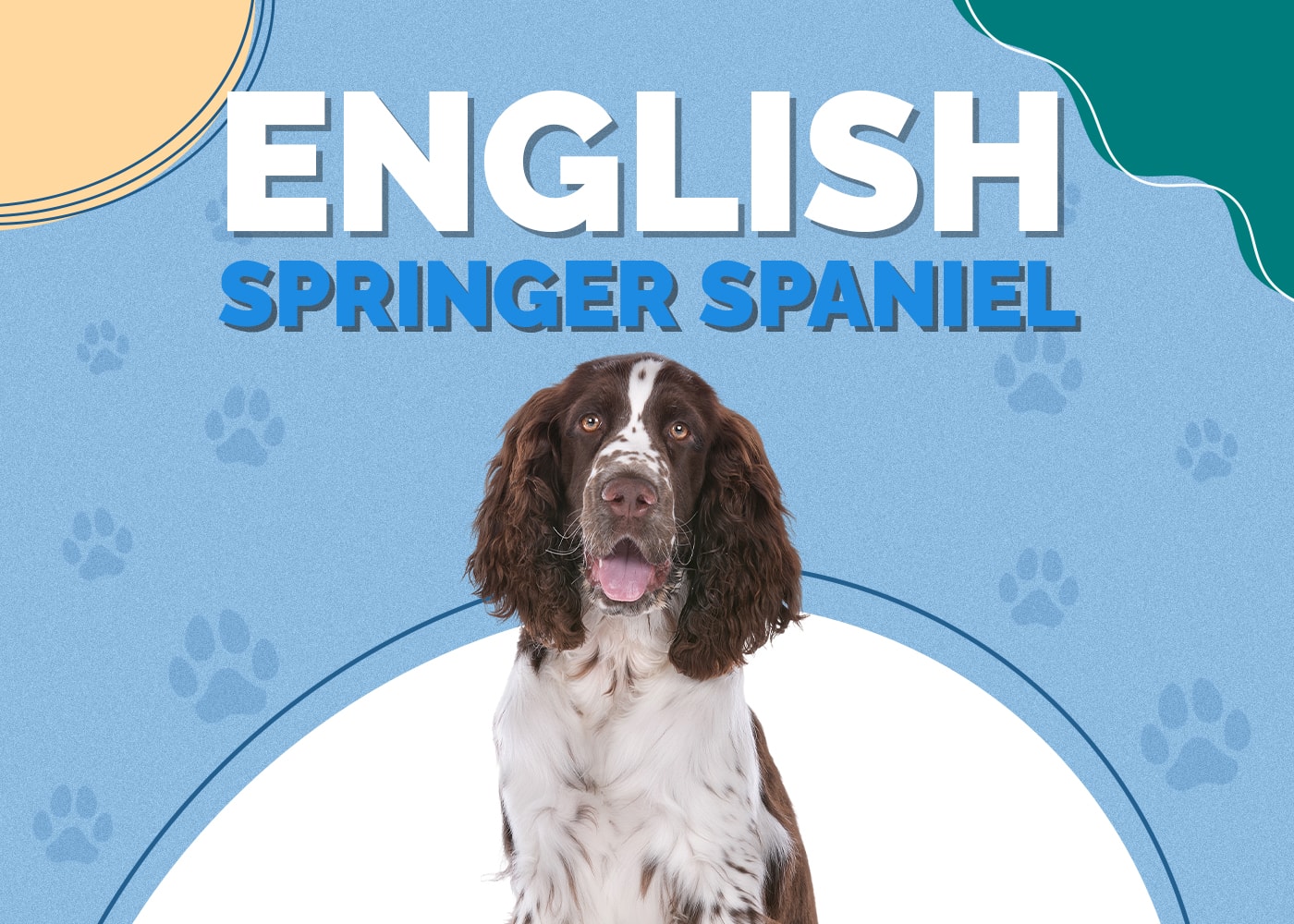Polish Greyhound: Info, Pictures, Characteristics & Facts

Updated on

Height:
27-42 inches
Weight:
60-90 pounds
Lifespan:
10-12 years
Colors:
Black and tan, blue and beige
Suitable for:
Active families, a house with a yard, experienced owner
Temperament:
Loyal, protective, territorial, well-mannered, gentle, affectionate
The Polish Greyhound, also known as the Chart Polski, is a large-sized dog with a commanding appearance. Although it is more muscular and larger than other sighthounds, it has a lithe body and long legs, characteristic of the breed.
Unlike other sighthounds, it is intrinsically protective, territorial, and tends to be somewhat aggressive. It could, therefore, be a challenge to first-time dog owners.
The actual origins of the Polish Greyhound are not clear, but the first mention of the breed in Polish literature appears in the 13th century. The hound was originally bred for hunting fox, hare, deer, and wolves because of its running ability and high prey drive.
The dog is recognized by the Federation Cynologique Internationale (FCI) and the United Kennel Club (UKC) and is a great family companion.
Polish Greyhound Puppies
If you’re buying from the few breeders in the United States, don’t be surprised to find yourself on a waiting list for this pup.
Rescues and shelters might be good options, but you are unlikely to find a Polish Greyhound there. However, you should never buy from a pet shop, a puppy mill, or from breeders who can’t be trusted.
Before buying the dog, it is important to factor in other things that will drive up the costs. These include pet insurance, food, leashes, etc. This will prevent you from being overwhelmed once you buy the pet.
3 Little-Known Facts About the Polish Greyhound Dog
1. They Almost Became Extinct
Because of the harsh conditions in Poland during the 19th and 20th centuries, the number of Polish Greyhounds declined, and the breed was on the verge of being wiped out. But thanks to the efforts of breed enthusiasts in the 1980s, they survived imminent extinction. However, the breed is still rare outside Poland.
2. They Are Not Related to the Greyhound
The Polish Greyhound is surprisingly not related to the English Greyhound despite its name. The breed is said to have originated from Asiatic sighthounds.
3. The Breed was Owned by Polish Nobility
For many centuries, the Chart Polski was a favorite hunting companion for the Polish nobles and royals and was used for hunting rabbits, deer, and wolves.
Temperament & Intelligence of the Polish Greyhound Dog 🧠
Sighthounds are known for their gentle and mild manner, but the Polish Greyhound differs greatly. It is protective and territorial and can be alert and wary of strangers. However, it loves its family and is generally gentle, well-mannered, affectionate, and playful. The Chart Polski is also an intelligent breed and will respond well to commands. It is confident, well-assured, and brave. And when in action, it is brutally skillful and fast.
Are These Dogs Good for Families? 🏡
Although these dogs can be confrontational with strangers, they can be great pet companions for active families since they form great bonds with the owner and are affectionate and playful with family members. The dogs are also great with kids. Nevertheless, you should always supervise interactions between the dog and smaller children.
Does This Breed Get Along with Other Pets? 🐶 😽
The Polish Greyhound may not be the best choice for a dog if you have other pets in the household. It tends to run after anything that moves; it will chase after other pets, especially if they run away. However, with proper socialization from an early age, the dog can learn to coexist with other pets in the home peacefully.
Things to Know When Owning a Polish Greyhound Dog
A Polish Greyhound is unique and requires special care and attention. Here is what you need to know before owning one.
Food & Diet Requirements 🦴
Like most sighthounds, the Polish Greyhound features a unique physique. It has a huge chest that houses a large heart and capacious lungs while leaving very little room for the stomach and intestines. Their diet should, therefore, be well balanced and thought out. How much the dog eats will depend on their metabolism, age, health, size, and level of activity.
Divide the food into small rations to reduce the risk of gastric torsion and avoid overfeeding the dog since it is likely to get obese. For an adult, supplements may not be necessary if you feed them properly. You should also ensure that your animal has access to clean water all the time.
Exercise 🐕
For the Polish Greyhound, exercise is not just important but necessary. The dog needs to have an active lifestyle to stay in shape and to behave well around the home. Otherwise, it can be destructive and hyperactive when not allowed to burn off its energy. Fortunately, there are many opportunities to engage your dog in exercises. From bicycle running to track competitions and off-road coursing, your furry friend will have lots of fun.
A Polish Greyhound will never turn down an opportunity for exercise. But be warned: once they start running, they shoot like an arrow and can be hard to stop. So having a fenced yard in your home can be of great help. Since the dog is built for speed and not for stamina, you should consider dividing the exercises into short sessions that require quick bursts of energy.
Training 🦮
Although intelligent, a Polish Greyhound can be hard to train, especially for inexperienced owners. The animal is naturally inclined to run down prey and therefore learns to hunt quickly and easily. However, it has a hard time learning basic obedience and socialization. Therefore, start teaching it how to socialize at a young age.
Because of its high prey drive and aggressiveness towards strangers, training will require consistency and patience. From time to time, introduce the animal to new places, situations, people, sounds, and animals. Different scenarios will allow you to teach it proper and acceptable responses.
When training the dog, their territorial instincts might kick in, and they can start barking at strangers or other animals. Avoid rebuking or pulling back on its leash in such instances since you will only aggravate the situation. The dog will associate the negative experience with its target object or person and intensify their aggression.

Grooming ✂️
Grooming the Polish Greyhound is easy as it features a short coat that will stay in good condition without the need for regular brushing. You only need to brush it once a week to keep the fur from littering your house and furniture.
Like other dogs and pets, you should check the eyes and ears for any signs of discharge, irritation, or infection. Clean the ear by wiping the areas you can reach with a damp and clean cloth and keep the nails clipped and clean using the correct dog clippers. With proper grooming, you are only required to give the dog a proper bath once every 3 months. When you do, make sure to use the correct canine shampoo. You should also brush their teeth thrice a week to prevent teeth and gum disease.
Health and Conditions ❤️
With proper diet, exercise, and care, a Polish Greyhound can live up to 10 to 12 years. Since they are fond of running, they are prone to muscular-skeletal injuries that could affect their ligaments, muscles, and tendons. Although they are generally healthy, they could also experience various health complications. Serious health conditions include cardiomyopathy and gastric dilation volvulus (bloat) while others such as gum disease and allergies are not as serious.
- Gum Disease
- Allergies
- Bloat
- Cardiomyopathy
 Male vs. Female
Male vs. Female
A male Polish Greyhound can weigh between 57-71 pounds and can grow to a height of up to 26-32 inches. On the other hand, females weigh between 52-71 pounds and can grow as tall as 25-31 inches. There isn’t a noticeable difference in temperament or behavior between the two sexes.
Final Thoughts
The Polish Greyhound can be a great addition to your family, but only if you’re capable of keeping up with its active nature. The breed is pretty energetic, and walking your Polish Greyhound twice a day may not be adequate. It needs time off-leash to run around freely to stay in shape. If you prefer staying indoors all day, this is not the dog for you.
You should also be aware of the dog’s protective and territorial temperament. While it is gentle, well-mannered, and affectionate with family, it can be aggressive towards strangers and other pets and thus requires proper socialization.
If you’re looking for an active companion or a guard dog to keep intruders at bay, the Polish Greyhound is the perfect fit. But you might want to hold off if you are a first-time dog owner.
Featured image credit: Ewelina Lesik, Shutterstock













